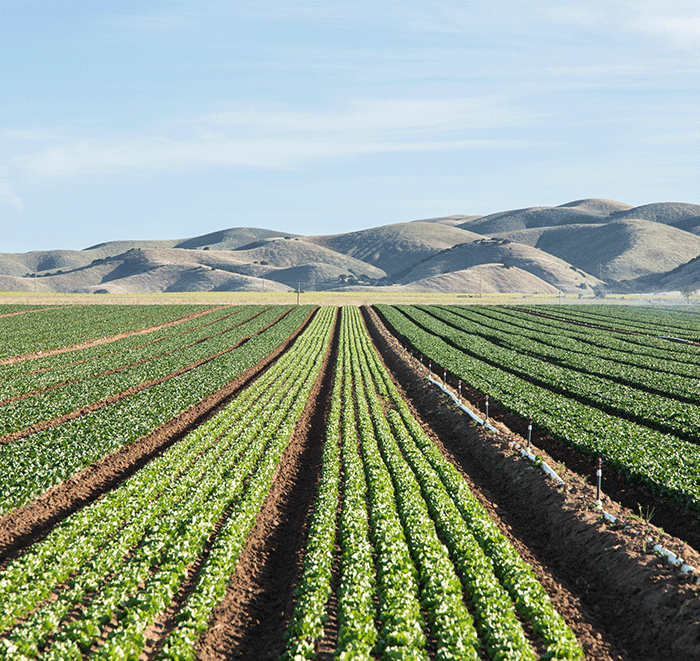
Replace What You Harvest
Crop Nutrient Removal Guides
Click image to view full guide, or click HERE
High fertility prices and the prospect of continued dry weather conditions may make you think of skipping some aspects of normal fertility practices.
- If fertility levels are high enough, lowering the use of phosphorus and potassium could maintain a reasonable yield but consider the areas of your fields that performed better than the balance of the field in question before making this decision.
Was the fertility higher or lower in that area? Chances are it was higher. Higher fertility areas of a field normally tolerate dry weather better. Always consider the agronomic impacts on the plant when skipping or reducing applied fertility levels.
Phosphorus
Uptake of P increases rapidly after about the V6 growth stage, approximately 4 to 6 weeks after corn planting. Uptake continues until near maturity. Plants that are phosphorus deficient typically have a purple or dark green color because leaf expansion is retarded more than chlorophyll and chloroplast formation. Plants grow slowly, stalks are thin and shortened, and maturity is usually delayed. Other factors that may cause purple corn include the following: cold temperatures, wet soils, compaction, and root injury. Soil testing can reveal if P is deficient. Unlike nitrogen, P has a relatively short range of movement in the soil and is therefore considered an “immobile nutrient.” P requires moist soil for effective root uptake. As a result, dry soil conditions can negatively affect soil uptake by corn roots.
Role of P. Skipping or reducing fertilizer applications for one year may have minimal impact on yield potential in many cases, due to the“banked” levels of P. However, having less available P can impact the plant in other ways, especially under stressful conditions. Basically, P is the main nutrient responsible for energy production in the plant. Without enough P to properly support energy production, corn cannot grow, produce, or handle stress as it should. It sounds simple, but it is absolutely critical to a successful crop.
Phosphorus Management. Soil fertility level for P is greatly impacted by the inherent availability of the soil and crop removal. Each bushel of corn harvested per acre removes approximately 0.4 pounds per acre of P2O5. Each bushel of soybeans harvested per acre removes approximately 0.85 pounds per acre of P2O5. Soil tests are recommended every 4 years or less. If there is concern about fertility, especially due to very high or very low yields, take soil tests to aid with fertility decisions.
Potassium
Uptake of K. Potassium uptake increases rapidly after about the V6 growth stage, approximately 4 to 6 weeks after corn planting. Therefore, when K demand becomes large and there is not enough available K, plant deficiency symptoms become visible. Uptake of potassium is completed soon after silking (R1 stage). Potassium deficiency is characterized by yellow and brown margins beginning at the leaf tips and can often be confused with nitrogen deficiency. Like nitrogen, potassium is mobile in the plant so lower leaves are affected first. Potassium deficiency is favored by low soil test K, compaction, and conservation tillage where no subsurface band of K is used. Dry soil conditions can also negatively affect soil uptake by corn roots.
Role of K. Potassium is one of 12 nutrient elements required for normal corn growth and development. Specifically, K has been linked to improved stalk strength. When corn takes up sufficient K, stalk dry-down is slowed after maturity. Thus, the risk of lodging after maturity may be reduced if K levels are adequate for crop production.
Potassium Management. Similar to P, the soil fertility level for K is greatly impacted by the inherent availability in the soil and crop removal. Each bushel of corn harvested per acre removes approximately 0.29 pounds per acre of K2O, and each bushel of soybeans harvested per acre removes approximately 1.45 pounds per acre of K2O. As previously suggested for P, basing fertilizer applications on soil tests and residual fertility is also recommended for K.
In Summary, as yield potential continues to increase, it is critical to manage soil fertility. While reducing fertilizer inputs may decrease your costs, it may not improve your bottom line. Please carefully consider the risks of reducing fertilizer inputs on crop production.


